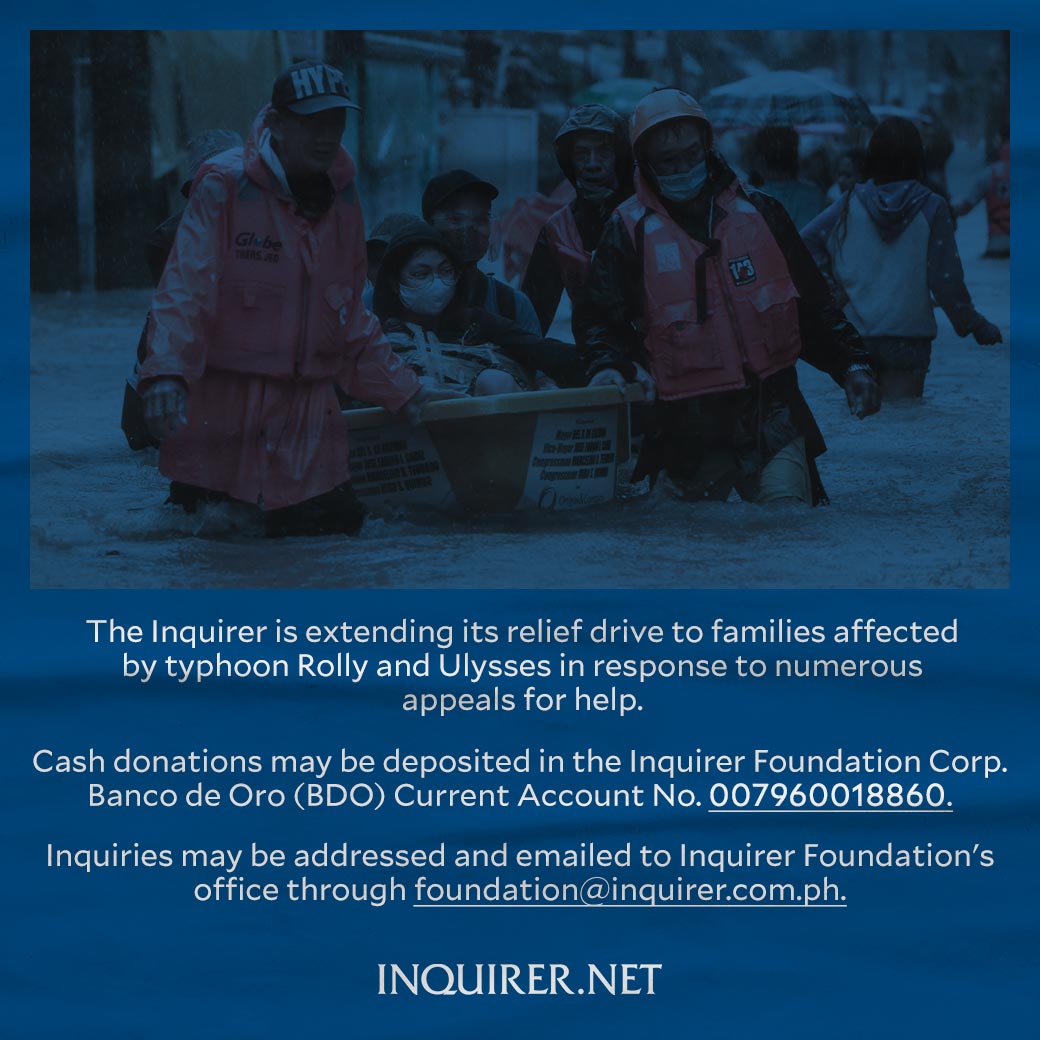Reforestation is key
According to Pagasa weather forecasters, some 150 mm of heavy rains fell in a 24-hour period when Typhoon “Ulysses” barreled through Luzon last week, only a third of the 445 mm of rainfall during Typhoon “Ondoy” in 2009. And yet Marikina River breached the 21.5-meter depth occasioned by Ondoy by half a meter, overflowing its banks, inundating surrounding plains, and trapping people on rooftops as
record-high floods swirled below. Up north in Cagayan Valley and Isabela, entire towns similarly fled to rooftops barely visible above muddy floodwaters. This, just 11 months after a “100-year flood” totally submerged six barangays and affected more than 10,000 families. Then as in last weekend, water cascaded from rivers made swollen by the Sierra Madre and that was released from Magat Dam.
Like Cagayan, Marikina is a valley nestled at the foot of several mountains. The mountains are watersheds meant to store rainfall in their forests and prevent it from flowing into communities below. But the forests in these mountains have been eaten up by quarrying and mining as well as road construction, while the trees have been mowed down by illegal logging and slash-and-burn farming. The Upper Marikina River Basin, another watershed, faces the additional challenge of land conversion and urban development.
Article continues after this advertisementWith more of such activities further denuding the forested mountains over the past 11 years since Ondoy, it’s no wonder that more water would pour unimpeded over Marikina, Rodriguez, and Cainta, completely engulfing these catch basin areas.
Such disastrous flooding and its underlying causes point to the most viable, and probably the only sustainable, solution to this perennial problem, according to the Asean Centre for Biodiversity (ACB): reforestation, and the conservation of our remaining forests.
The group noted that the Sierra Madre, which represents 40 percent of the country’s forest cover, is a biodiversity hotspot that will not only break strong winds but also absorb large amounts of rainfall.
Article continues after this advertisementReforestation should help restore the country’s fast-vanishing forest cover which, the Forest Management Bureau of the Department of Environment and Natural Resources (DENR) said, the country is losing at a rate of 47,000 hectares a year due to deforestation. Per a 2010 DENR report, some 161,240 ha of forest were recorded lost from 1988, mostly due to illegal logging. But though reforestation has again become the battle cry—with a regional official from the Land Transportation Franchising and Regulatory Board suggesting that members of cooperatives must plant 500 trees before being granted a franchise—it would serve us well to look back at the previous fails and the best practices of earlier greening campaigns to do better this time.
The mayor of Alcala town, Cagayan, for instance, has turned to science and heeded the advice of Dr. Fernando Siringan, former director of the UP Marine Science Institute, and his fellow geologist Keanu Jershon Sarmiento, whose thorough study from July to September 2020 pointed to several factors behind the massive flooding in the province.
Based on the recommendation of the two scientists, Alcala Mayor Tin Antonio has convinced farmers to abandon yellow corn and to shift to agroforestry. The Siringan-Sarmiento study had cautioned against yellow corn farming on slopes and the use of herbicides which kills all vegetation and weakens the soil. “We have started to plant native forest, flowering, and fruiting trees (on our) watersheds that have a combined area of 300 hectares… (and) are set to plant native forest and flowering trees on all Alcala roadsides that span around 120 kilometers,” the mayor added.
Reforestation efforts must graduate from being a government program to being a community endeavor, with people trained on correct farming methods, the right tree species to plant and their proper cultivation, and other viable alternatives to slash-and-burn practices.
Also important is for the government to allocate enough resources to hire more guards and forest rangers to keep out illegal loggers and prevent trespassers from fencing off reforestation sites and nature sanctuaries, as what happened to the 2,700-ha Masungi Geopark in Baras, Rizal, where armed security guards of a private company have shrugged off a show-cause order from the DENR. The current ratio of park rangers to protected land nationwide is one for every 4,000 ha, making their job virtually impossible.
To hold erring entities to account for what happened in Cagayan, the DENR should heed the President’s order to look into the mining and logging activities in the area and prosecute those responsible.
Reforestation should be at the core of the country’s disaster risk reduction efforts, the ACB said—sound advice that we can ignore only at our own peril.
















